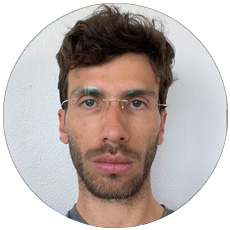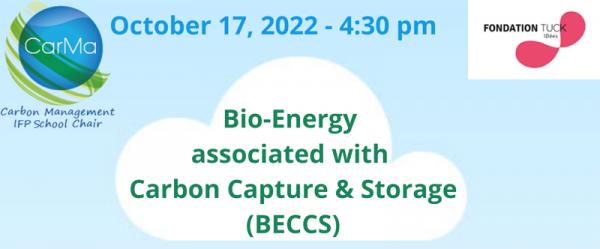Year 3 Post-Doctoral Program (Start March 2022)

Dr. João Pedro Domingues
Dr. João Pedro Domingues is interested in subjects related to land and resources management with the objective to conciliate food production and environmental protection. His international academic background and professional experiences provide him with deep analytical expertise in agricultural and land use management solutions.
He has a Bachelor’s degree in Animal Science at the University of Sao Paulo State in Brazil and he attended a Master in Agricultural Economics and Policy at AgroCampus Ouest in Rennes. The research carried out during his Ph.D. focused on the socioeconomic metabolism of French livestock areas. It included a retrospective analysis of agricultural intensification in the last century and the consequences it had on livestock performances and environmental impacts. In his first postdoctoral research (Animal Future Consortium) he contributed to implement a similar analytical framework of his PhD but to a larger scale, covering many European countries and with the objective to assess how to soften trade-offs while maximizing synergies of agricultural sustainability issues. In his second postdoc his research consisted of analysing the production costs of lignocellulosic biomass for bioenergy production at global scale.
Since the 1st March, 2022, he is part of the CarMa research team.
No-harm deployment scenarios of bioenergy (and BECCS) and their contribution to negative emission targets and Sustainable Development Goals
Id. card:
Project Type: Post-doctoral research work
Duration: 18 to 24 months, starting on March 2022
Host: EcoSys Joint Research Unit, Thiverval-Grignon, France
Key words: negative emissions, bioenergy, CCS, sustainable development goals, modeling, global change, land-use
Ideal profile for the candidate: Applicants must hold a PhD in one or several of the following areas: agronomy, land systems science, numerical modeling, statistics, sustainability sciences. An interest in global change and skills in modeling and/or applied statistics will be appreciated
Supervisors:
Dr. Benoît Gabrielle, Professor in Environmental Biophysics, EcoSys Joint Research Unit, AgroParisTech / INRAE / Paris-Saclay University,Thiverval-Grignon, France
Dr. Jean-François Soussana, Vice-Chair for International Affairs, INRAE, Paris, France
Contact: Benoît Gabrielle @ : Benoit.Gabrielle@agroparistech.fr
Research topic background
Land based ecosystems provide a net carbon sink of around 11.2 GtCO2 per year over the period 2007-2016 (equivalent to 29% of total CO2 emissions), but this net carbon sink is threatened both by climate change and by land use change (IPCC, 2019). Strengthening the land-based carbon sink through nature based solutions, such as soil carbon sequestration, forest management, fire management, reduced forest degradation and deforestation creates co-benefits for climate change adaptation, food security, biodiversity, land degradation and desertification. In contrast, the production and use of biomass for bioenergy (with or without carbon capture and sequestration, CCS), which also provides negative emissions, can have co-benefits, adverse side effects, and risks for land degradation, food security, GHG emissions and loss of biodiversity (IPCC, 2019).
According to integrated assessment models, large-scale deployment of mitigation options such as bioenergy and afforestation would have negative impacts on food security, biodiversity and land degradation. As a result, the land area available to grow bioenergy feedstock would range from 0.1 to 1 million km2 in scenarios with high population and low environmental policies, and from 1 to 4 million km2 in low population scenarios and strong environmental policies. However, negative impacts are context specific and depend on the scale of deployment, initial land use, land type, bioenergy feedstock type, initial carbon stocks, climatic region and management regime (IPCC, 2019).
To make further progress, the research undertaken will contribute to answer three complementary questions for the 2050’s:
- How to minimize the adverse side effects (i.e. no harm scenario) of global bioenergy (with/without CCS) deployment?
- Can we achieve negative emissions targets if bioenergy deployment is restricted as in no-harm scenarios?
- Are no-harm bioenergy scenarios compatible with Sustainable Development Goals for the land sector?
Scope and approach
1. Defining and mapping ‘no harm’ bioenergy deployment scenarios at global scale and in France. Based on IPCC (2019, chapter 6), overlapping land based challenges will be mapped at 0.5° scale by land use type. The ‘no harm’ deployment of bioenergy will be mapped by excluding pixels with one or several of the local challenges that could be worsened by shifting to bioenergy (e.g. region with food insecurity, with loss of a biodiversity hot spot, etc.).
2. Assessing negative emissions in ‘no-harm’ bioenergy deployment scenarios. A balance model of the global land sector (including population; land use, bioenergy, food and forestry systems, as well as carbon balance and non-CO2 GHG emissions) will be used to calculate negative emissions both from bioenergy and from nature based solutions. This model will be run under a large range of assumptions concerning population, food and bioenergy demand and negative emission targets. Bioenergy deployment will be constrained as in step 1 (no harm scenario). Negative emissions from ‘no harm’ bioenergy and from nature-based solutions will be calculated and compared to negative emissions targets.
3. With the global balance model, relative distance to several SDG targets (also matching negative emission targets) will be calculated and scenarios close to these targets will be further assessed in terms of bioenergy deployment, population, land use and food demand. In this way, additional constraints on bioenergy deployment, e.g. from increased food demand, will be assessed in SDG compatible global scenarios for the 2050’s.
The potential of the above approach to be applied at the scale of France or Europe will be investigated via an active collaboration with the CLAND Convergence Institute of the Paris-Saclay University. One of the CLAND projects seeks to develop scenarios for carbon neutrality at national level, and this will be used to test the robustness of the global approach at a much higher spatial resolution.
References
IPCC, 2019: Climate Change and Land: an IPCC special report on climate change, desertification, land degradation, sustainable land management, food security, and greenhouse gas fluxes in terrestrial ecosystems [P.R. Shukla, J. Skea, E. Calvo Buendia, V. Masson-Delmotte, H.-O. Pörtner, D. C. Roberts, P. Zhai, R. Slade, S. Connors, R. van Diemen, M. Ferrat, E. Haughey, S. Luz, S. Neogi, M. Pathak, J. Petzold, J. Portugal Pereira, P. Vyas, E. Huntley, K. Kissick, M. Belkacemi, J. Malley, (eds.)]. In press.

October 17, 2022 4:30 - 7 pm: CarMa Online Conference at Fondation Tuck
CarMa is pleased to share on its ongoing research activity

Dr João Pedro Domingues joins the CarMa Research Team
March 01, 2022



